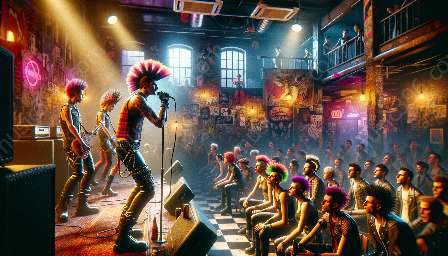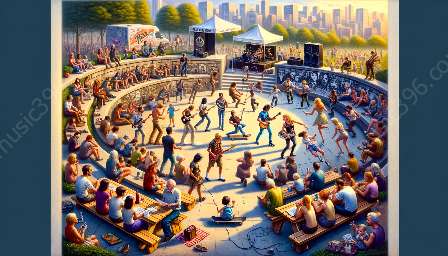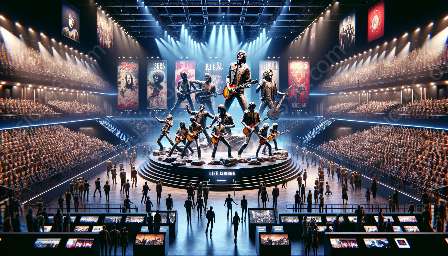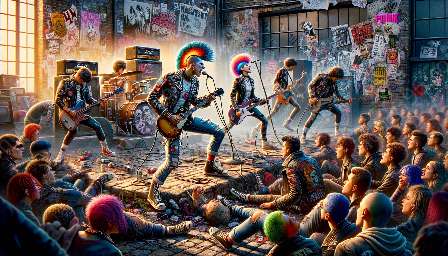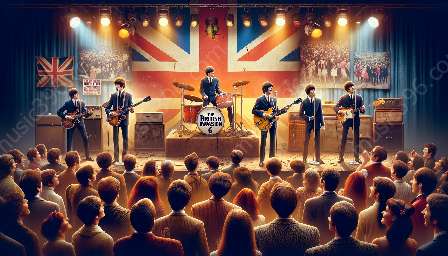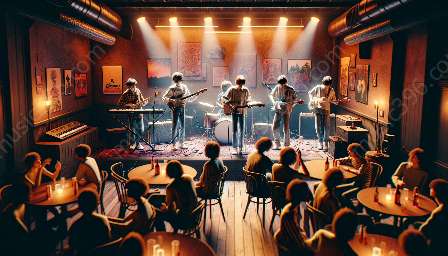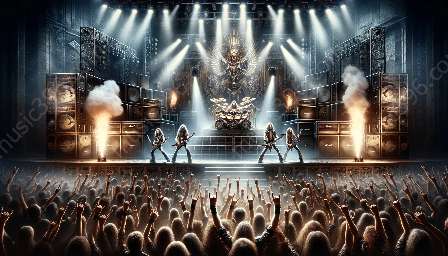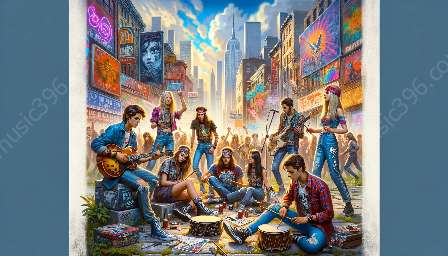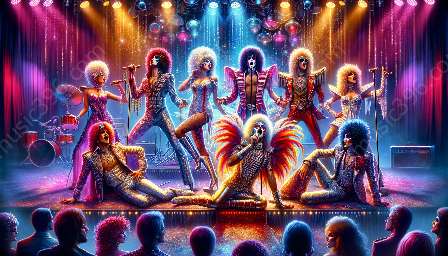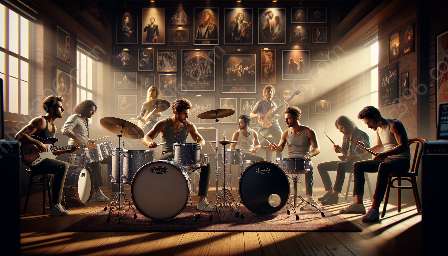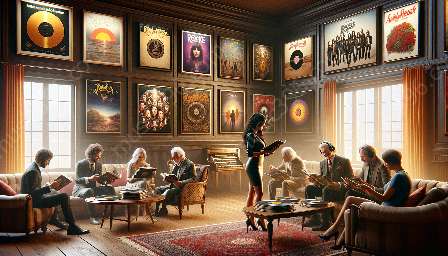Rock music has always been closely associated with distinct fashion and style statements, serving as a reflection of the genre's rebellious and free-spirited nature. From the early days of rock 'n' roll to the modern rock scene, the fashion and style elements have evolved in response to the changing trends in rock music.
Trends in Rock Music
Before delving into the key characteristics of rock music fashion and style, it's important to understand the trends in rock music that have shaped its cultural landscape. The history of rock music is marked by various movements and sub-genres, each influencing fashion and style in unique ways.
Rock 'n' Roll Era (1950s-1960s)
The emergence of rock 'n' roll in the 1950s brought with it a new style that symbolized rebellion, freedom, and youth culture. Musicians like Elvis Presley popularized the greaser style, characterized by leather jackets, blue jeans, and slicked-back hair. This era also saw the rise of iconic fashion items such as leather boots and sunglasses that became synonymous with rock 'n' roll.
Psychedelic and Counterculture Movement (1960s-1970s)
The counterculture movement of the 1960s and early 1970s introduced a psychedelic and bohemian aesthetic to rock music fashion. Bands like The Beatles and The Rolling Stones embraced colorful, paisley-patterned clothing, bell-bottom jeans, and fringe jackets, reflecting the spirit of peace, love, and artistic expression.
Punk Rock and New Wave (1970s-1980s)
The punk rock and new wave movements of the late 1970s and 1980s rebelled against mainstream fashion and embraced anti-establishment and DIY styles. Mohawks, leather jackets adorned with pins and patches, ripped clothing, and bold, graphic prints became iconic in punk fashion. The androgynous and edgy looks of artists like David Bowie and Debbie Harry also influenced the new wave fashion scene.
Grunge and Alternative Rock (1990s)
The grunge and alternative rock scene of the 1990s ushered in a more disheveled and low-maintenance aesthetic. Bands like Nirvana and Pearl Jam popularized flannel shirts, ripped jeans, combat boots, and oversized layers, embodying an effortless and anti-fashion attitude that resonated with the disillusioned and disaffected youth of the era.
Modern Rock (2000s-Present)
With the dawn of the 21st century, the fashion and style associated with rock music have become more diverse and eclectic. From the revival of vintage rock 'n' roll looks to the fusion of streetwear and high fashion, contemporary rock musicians and audiences embrace a wide spectrum of styles, reflecting the influence of digital culture and global fashion trends.
Key Characteristics of Rock Music Fashion and Style
At its core, rock music fashion and style embody a spirit of rebellion, individualism, and self-expression. Certain key characteristics have endured across different eras and sub-genres, defining the quintessential rock 'n' roll look.
Leather and Denim
One of the enduring symbols of rock music fashion, leather and denim garments exude a sense of ruggedness and defiance. Leather jackets, motorcycle vests, and denim jeans continue to be staples in rock-inspired wardrobes, evoking a sense of cool and rebelliousness.
Band Merchandise
Band t-shirts, hoodies, and accessories featuring logos and artwork of favorite rock bands are essential elements of rock music fashion. Band merchandise serves as a form of identity and solidarity within the rock community, allowing fans to display their musical allegiances proudly.
Statement Accessories
From studded belts and leather wristbands to iconic accessories like aviator sunglasses and choker necklaces, the rock music fashion scene is characterized by bold and attention-grabbing accessories that complete the rocker look.
Boots and Footwear
Whether it's combat boots, Chelsea boots, or platform shoes, footwear plays a crucial role in defining rock music style. Boots with chunky soles and edgy details convey a sense of rebellion and confidence, complementing the overall rocker aesthetic.
Rebellious Hairstyles
Rock music has often been associated with unconventional and rebellious hairstyles. From the pompadours and quiffs of the rock 'n' roll era to the unkempt and grungy looks of the 90s, hairstyles in rock music exude a sense of defiance and nonconformity.
Gender Fluidity and Androgynous Fashion
Throughout the history of rock music, gender-bending and androgynous fashion have played a significant role in challenging traditional norms. Artists like David Bowie and Prince blurred the lines between masculine and feminine styles, inspiring a new wave of gender fluidity in rock fashion.
Conclusion
The fashion and style associated with rock music serve as visual representations of the genre's rebellious and nonconformist ethos. By embracing key characteristics such as leather and denim, band merchandise, statement accessories, distinctive footwear, rebellious hairstyles, and gender fluidity, rock music fashion and style continue to evolve in response to the ever-changing landscape of rock music trends, ensuring that its impact on popular culture remains enduring and influential.





